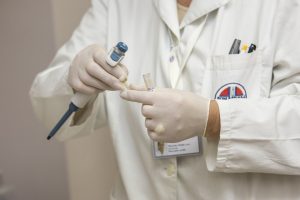How IoT is improving the healthcare industry
The internet of things has advanced technology in many global industries, but one sector in particular that has benefited from IoT is healthcare. Global study, “The Internet of Things: Today and Tomorrow,” published by Aruba, a Hewlett Packard Enterprise company, found that roughly 60% of healthcare organizations have already introduced IoT devices into their facilities.
Healthcare industry leaders are using IoT for patient monitors (64%) and energy meters (56%). The results are already very positive, with 57% of respondents noting increased workforce productivity and 57% saying IoT helps save costs.
As more healthcare facilities invest in IoT upgrades, it’s interesting to note the improvements felt by patients, providers and stakeholders alike. Furthermore, IoT is bettering individual health through IoT apps and monitoring that give people more knowledge and control over their daily health. Here’s a look at how IoT is revolutionizing the healthcare industry as a whole, from hospital upgrades to at-home apps.
IoT launches smart hospitals
A smart hospital uses connected assets to improve maintenance, procedures and capabilities. Though many hospitals have not yet upgraded their technology, it’s likely that the next five years will see the launch of many smart hospitals around the world. Connected assets improve the functionality of all hospital equipment. Maintenance managers’ jobs will be much easier as they can remotely monitor the hospital temperature, humidity and air regulation.

Source: Pixabay
Managers will also have access to predictive analytics, which means far better regulation of all machines in the hospital. For example, if something happens to an MRI machine in a hospital, it can mean delays for patients that do not have time to wait. Predictive analytics means managers can fix a problem before it happens.
Smart beds will be able to monitor a patient’s blood pressure, temperature, heartbeat and more. This technology can ease the burden off of already overworked nurses who continuously monitor this information. If there is a sudden change in a patient’s vital signs, an alert will be sent to a supervisor who can regulate the situation.
Connected wearables automatically track patients
One problem healthcare providers often face is understanding what happens to their patients after they are discharged. Patients have to come in for multiple follow-up visits and report any incidents, feelings or problems after they leave the hospital. Wearable technology can make this much more manageable for both patients and healthcare providers. For example, a wearable device can measure a patient’s heart rate, blood pressure, temperature, breathing and more, which can then be tracked remotely by doctors and nurses. If a patient is having breathing problems, an alert can be sent to the person monitoring the device, who can then take necessary action, such as sending an ambulance. Imagine the implications of this technology for elderly patients or patients who live alone.
Wearables mean that patients do not need to go to the hospital when it’s not necessary because doctors and nurses can track progress remotely. This allows hospital staff to work on more pressing and urgent cases. Furthermore, when the patients do go to the doctor for a follow-up, staff can review data collected by the wearable for an accurate diagnosis.
IoT revolutionizes patient data collection and records
Connected devices mean endless patient data collection. Imagine a patient in a smart bed — the amount of data that medical staff can view will be extremely useful and recorded automatically. Again, electronic, connected records help nurses because it means less time chasing down information on each patient. The data collected from the patient’s wearable device can also be stored safely in their electronic health record, making diagnosis easier when all information is in one place.
Individualized health assessments
Patient care will completely change over the next five years, but what’s also changing is that now individuals can improve their health themselves with accurate assessments. Many apps have sprung up to give people more control over their health.
Sleep apps monitor sleep cycles to make sure everyone gets enough rest. Fitbits track exercise routines to help people stay in shape. Calorie planner apps help with meal preparation, with many apps offering a tailored nutrition plan so individuals know what to eat and what foods to avoid. On the horizon for the individualized experience are ingestible cameras and internet-connected sensors that can monitor whether or not patients are taking their medication.
A bright future for IoT and the healthcare industry
By 2019, 87% of healthcare organizations plan to implement IoT technology, which is slightly higher than the percentage of businesses that plan to implement IoT by this time (85%). Connected technology can revolutionize the industry and generate products, such as smart inhalers, smart pills and more, all of which will help individuals become healthier. Multiple stakeholders, and especially patients, will all benefit from the expansion of IoT in healthcare, which is why many are looking to invest in this sector.
All IoT Agenda network contributors are responsible for the content and accuracy of their posts. Opinions are of the writers and do not necessarily convey the thoughts of IoT Agenda.
